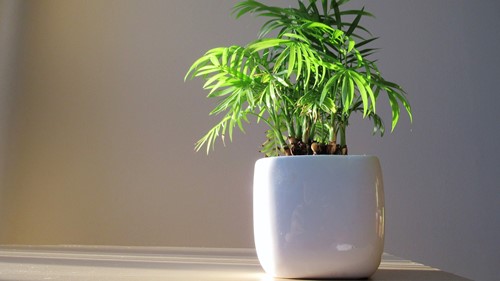
Despite its sheer beauty, bamboo has a bad rap as an outdoor plant because of its rapid growth and tendency to spread across the property. But those reasons are exactly why it makes for such an excellent indoor potted plant. Beyond that, it’s a low maintenance plant that is elegant and brightens up the room in an instant. If that’s exactly what you’re hoping for in a houseplant, this indoor bamboo guide is for you.
Select Your Preferred Variety
Your first step is choosing your preferred type of bamboo. Although there are many kinds in this plant family, not all will thrive indoors.
The most popular indoor bamboo varieties include:
-
Koi
-
Takemurai
-
Holochrysa
-
Flavenscens Inversa
-
Vittata
-
Albostriata
-
Sasa Tessellata
To decide between your options, examine their appearance and hardiness. If you’re a beginner, you might like the rather hardy Vittata, which turns a beautiful golden yellow color. Advanced indoor gardeners might want to try the Sasa Tessellata, which grows huge leaves up to four inches wide and two inches long.
Set Your Bamboo Up for Success
By choosing the right pot, soil and placement in your house, you can help your bamboo thrive starting from day one. When selecting a pot, go with one just slightly bigger than its original container. Beyond that, make sure that it has a wide mouth that will allow the root ball to come out in one piece when you need to repot it.
Fill the new pot with a high-quality potting soil and plant your bamboo inside. Then, completely moisten the soil with distilled water to help the roots get established. Never use tap water since even a small amount of chlorine can damage your plant.
Keep Temps Warm and Provide Lots of Light
With your bamboo in its new container, find a spot inside that gets full to partial sun. In that spot, your plant will grow strong stems and brilliant green leaves. Give your plant a quarter turn each week so all of it gets to enjoy the sunlight every month.
Bamboo plants appreciate a trip outside to directly soak in the sunshine when you can swing it. They like to sway in a gentle breeze, which helps to strengthen their stems and roots even more.
Although bamboo can tolerate cold snaps well, it is happiest when temperatures hover around 70 degrees Fahrenheit. They can tolerate up to 90 degrees without breaking a sweat though. Normal humidity levels are fine, so you don’t have to worry about making any adjustments there.
Apply Fertilizer Monthly and Gradually Upgrade Your Pots
Since bamboo plants can suck all the nutrients out of the soil over time, apply liquid fertilizer about once a month. Observe the growth of your bamboo and upgrade the size of your pot whenever it seems a bit cramped.
You can also cut back the extra bamboo shoots as you need to keep it happy in its container. Or gently separate them when repotting your plant and give them away to your loved ones, so they can grow some bamboo as well.
As you follow these steps, you will end up with a strong, healthy indoor bamboo plant. You can then use that knowledge to grow other varieties that catch your eye and end up with a houseful of beautiful bamboo.
About the Author

Haruko Hata DRE #01824502
It’s not just about a house…it’s more about your life and dream….
My passion is to help my clients make their dreams come true and to make them happy. I love to see smiles on their faces, which makes me happy, too. That’s why I always strive to look at the positive potential of my clients’ dreams.